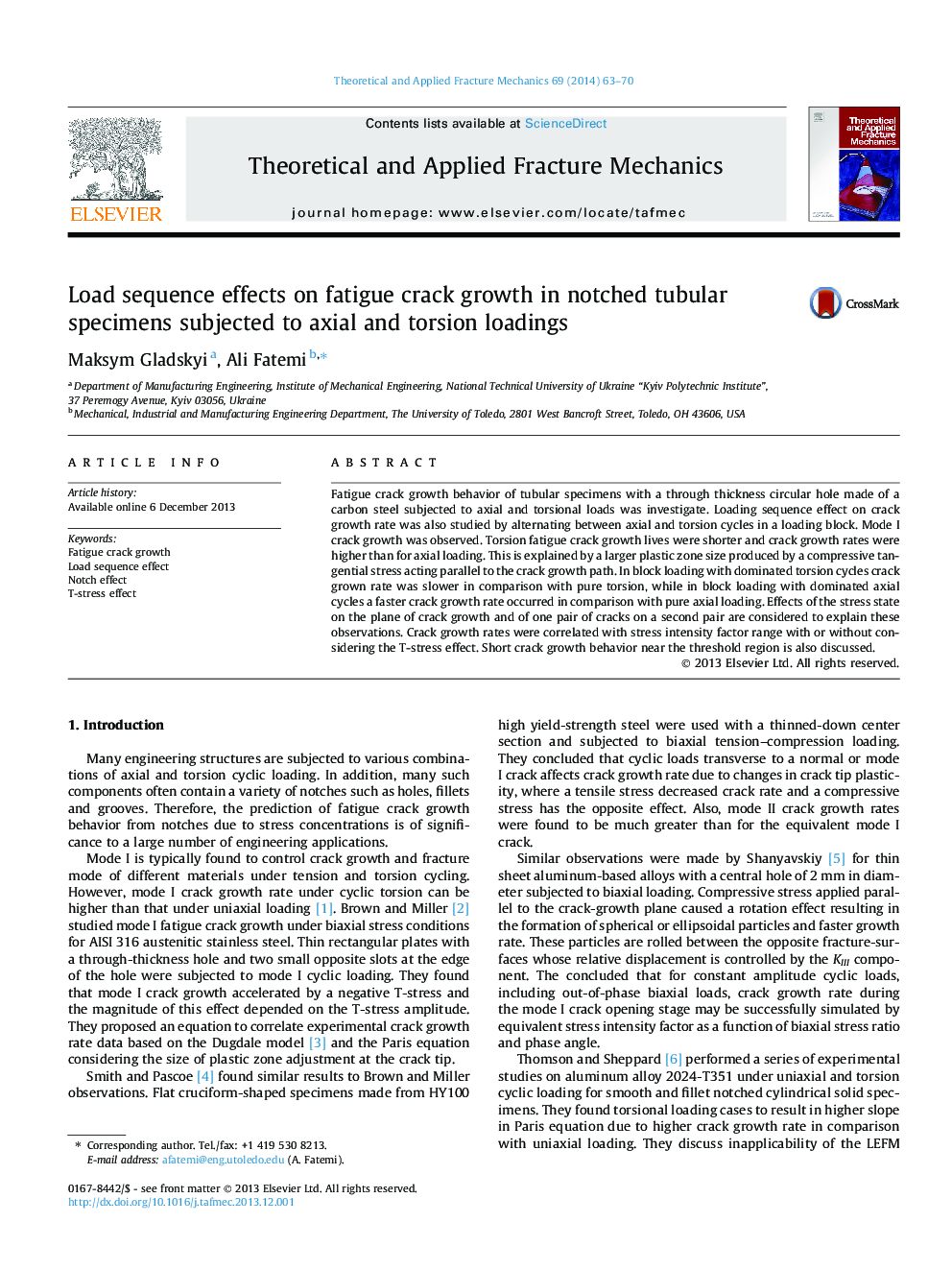| کد مقاله | کد نشریه | سال انتشار | مقاله انگلیسی | نسخه تمام متن |
|---|---|---|---|---|
| 808734 | 1468330 | 2014 | 8 صفحه PDF | دانلود رایگان |
• Study of crack growth in tubular specimens with a hole under axial and torsional loads, including block load tests for load sequence effects.
• Explanation of shorter fatigue crack growth lives and faster crack growth rates in torsion, compared to axial loading.
• Explanation of observed behavior in block loading tests with either dominated torsion or axial cycles.
Fatigue crack growth behavior of tubular specimens with a through thickness circular hole made of a carbon steel subjected to axial and torsional loads was investigate. Loading sequence effect on crack growth rate was also studied by alternating between axial and torsion cycles in a loading block. Mode I crack growth was observed. Torsion fatigue crack growth lives were shorter and crack growth rates were higher than for axial loading. This is explained by a larger plastic zone size produced by a compressive tangential stress acting parallel to the crack growth path. In block loading with dominated torsion cycles crack grown rate was slower in comparison with pure torsion, while in block loading with dominated axial cycles a faster crack growth rate occurred in comparison with pure axial loading. Effects of the stress state on the plane of crack growth and of one pair of cracks on a second pair are considered to explain these observations. Crack growth rates were correlated with stress intensity factor range with or without considering the T-stress effect. Short crack growth behavior near the threshold region is also discussed.
Journal: Theoretical and Applied Fracture Mechanics - Volume 69, February 2014, Pages 63–70
